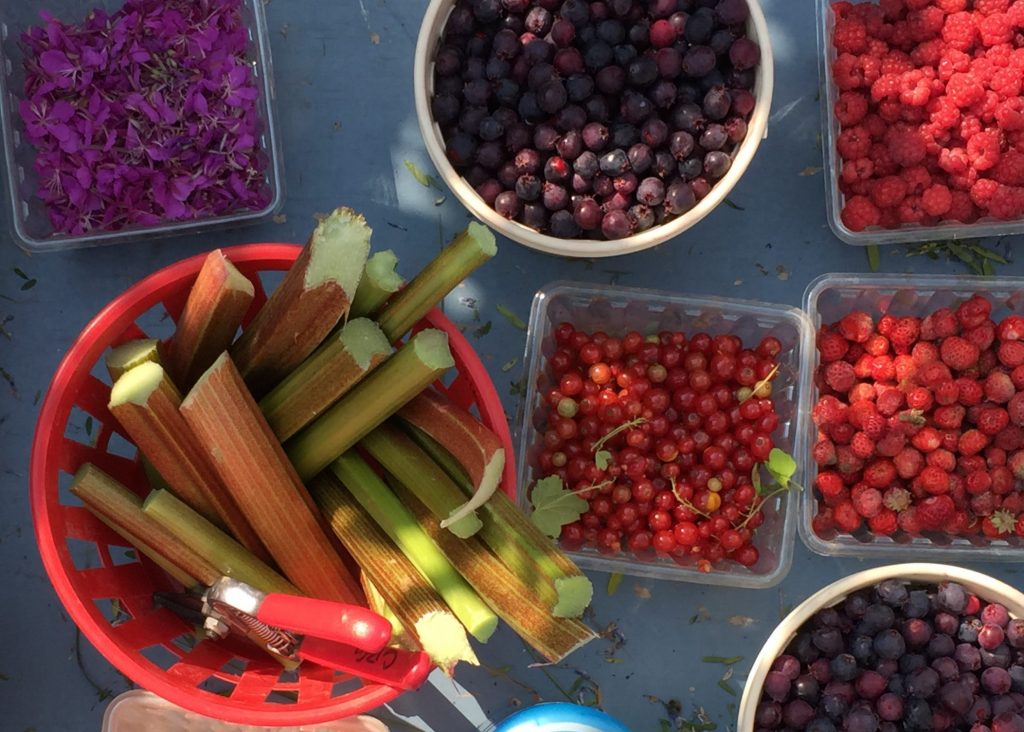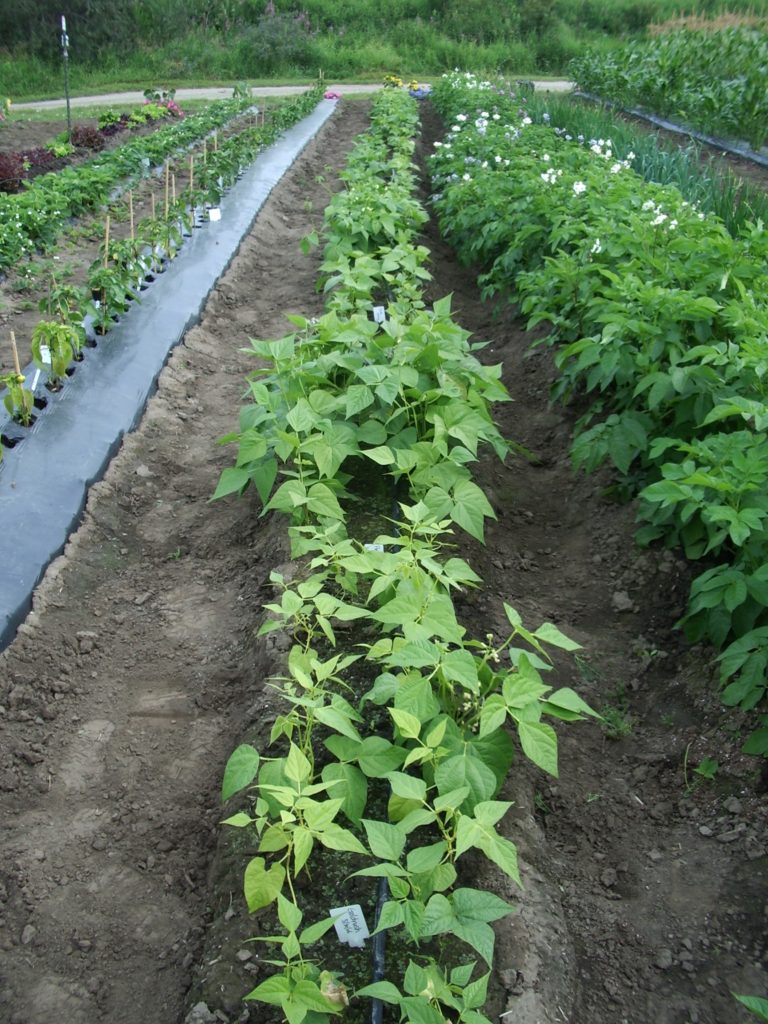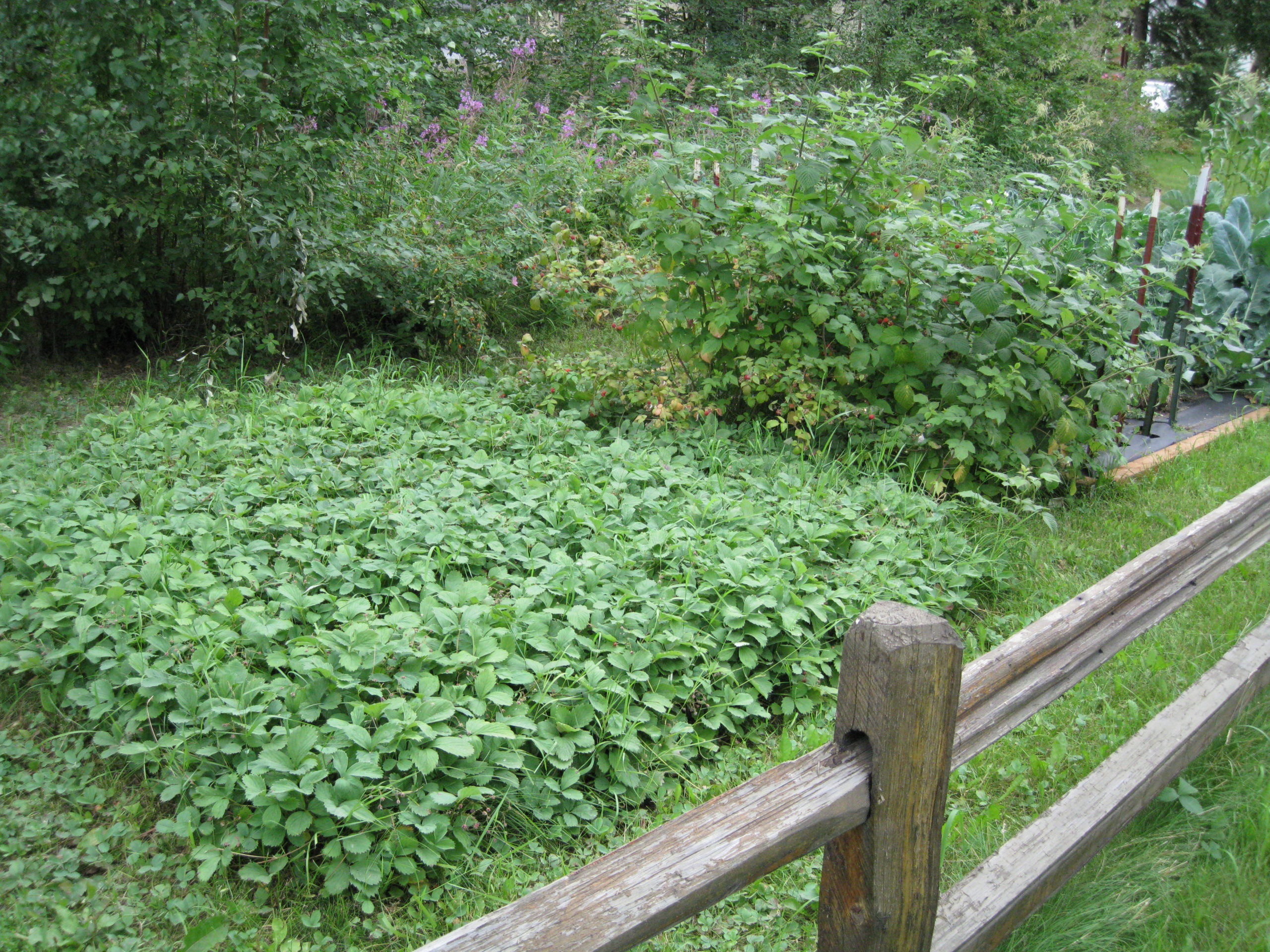There are so many reasons to grow more of your own food. It’s healthy, it can improve your food security, and it it can be highly rewarding. If you’re hoping to ramp up your production to make a bona fide contribution to your diet, first make a plan.

I created a completely customizable Google Sheet to help you do this. Based on the size of your family and preferences for various vegetables and berries, the sheet will help you calculate how much row and square footage you’ll need to grow enough food to reach your desired goals. You’ll have to make a copy of the sheet or download the sheet to enter your numbers and you will need a google account.

From left, peppers (grown with plastic mulch), beans and potatoes grow in rows.
In the Sheet, yields per square foot are very roughly based on variety trials at the Fairbanks Experiment Farm as well as other sources. Yields vary significantly depending on variety so you should peruse past variety trial reports to select top performers. I also added 25% more square feet to hedge against less productive gardens, unexpected weather and, well, all kinds of other things like moose.
A few crops listed in the Sheet, including tomatoes and cucumbers, should be grown in a greenhouse to maximize production. Other crops like winter squash, basil, zucchini and corn need some type of soil warming and/or air warming contraption, such as plastic mulch to warm the soil or a hoop house to warm the air and soil.
There are lots of ways to extend the season—I’m planning on copying the simple hoop house Emily shows in this video. She estimates that it only cost her about $200 or $300 to make. Although some crops all but require some type of warming boost, many other cool-season crops will certainly benefit from the warmth as well. I wouldn’t plant things like spinach, Swiss chard, or cilantro, to name a few, that tend to bolt in a hoop house or greenhouse, though.
Another important aspect of scaling up is planting seeds. While not an absolute must, if you’re expanding your production, it can offer a huge cost savings. This is a nice calculator for figuring out when you should start what seeds. It’s not perfect for Alaska, but it’s a starting point. For example, some crops listed in the calculator like melons, watermelon and pumpkins, simply won’t mature in our short Alaska growing season unless you start them much earlier and/or plant them in a greenhouse or a hoop house.
Drip irrigation is all but essential when scaling up as well.
And of course, where you live and your garden climate zone plays a big role in how productive your garden will be and in what you can grow outside compared with a greenhouse or season extender.
Terry Reichardt and others have shown it is entirely possible to grow, hunt, fish and gather nearly all of your food in Alaska and could be something to aspire to for the rest of us.
If you don’t want to or can’t grow very much of your own food, consider buying it locally at a farmers’ market or directly from a farmer.

Published in the Fairbanks Daily Newsminer April 26, 2020.